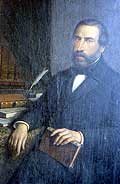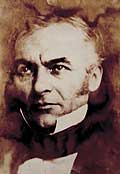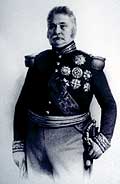Jean-Pierre Cros-Mayrevieille (1810-1876)
This Carcassonne historian and journalist
remains the symbol of the preservation of the city. In 1839
he discovered the tomb
of Bishop Guillaume Radulphe in the south chapel
of the old cathedral and applied to the relevant authorities
for the edifice to be protected under the Historic Monuments
Act. His historical and archaeological research culminated,
notably, in the publication of Monuments militaires et religieux
de la cité de Carcasssonne (military and religious monuments
of Carcassonne).
The Marquis d'Hautpoul
In 1850, the municipality and local intellectuals were displeased that the city had been declassified as a military installation. They appealed to the Marquis d'Hautpoul, the war minister, who came from the Aude district, who, without delay, ordered the reclassification of the city. This was a final guarantee against destruction.
Prosper Mérimée (1803-1870)
At the age of 31 he was appointed Inspecteur des Monuments historiques (historic monuments inspector), and remained in that post till 1860, while continuing his literary career. He tirelessly travelled the length and breadth of France to enlarge the inventory and ensure the preservation of heritage monuments. It was he who chose to appoint the young architect, Eugène Viollet-le-Duc, to be responsible for the restoration of the most prestigious national heritage sites.
|










